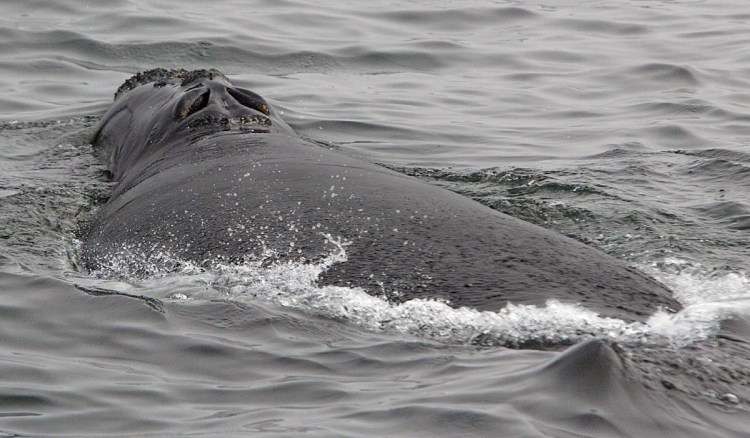Scientists no longer have to collect poop to get key data on the health of endangered right whales. A new study indicates that under the right conditions, scientist can get real-time hormonal data by collecting the spray from whales’ blowholes.
Researchers with the Anderson Cabot Center for Ocean Life at the New England Aquarium in Boston captured 100 blow samples from 46 right whales over eight days off the East Coast.
The new method outlined Tuesday in the journal Scientific Reports provides “real-time” hormonal data compared to fecal samples or biopsies of whale blubber, providing a window into whale health that can help marine managers protect the whales, said Liz Burgess, the study’s lead author.
Hormone levels are important because they can help scientists determine how right whales respond to stresses from human-related activities, injuries and reproduction.
“It will be an early-warning monitoring system. We’re looking at quantifying the stress response to get ahead of what they’re experiencing and to see if we need to make management changes before there are dire consequences,” Burgess said Tuesday.
North Atlantic right whales number only about 450 and are jeopardized by entanglement in fishing gear and ship strikes as they migrate to and from New England each summer.
For the study, the team used a boat with a long pole to capture blow samples from the right whales in 2015, researchers said. Then they examined urea concentrations from the samples and corrected for ocean water contamination to compare hormone levels in whales, they said.
The study proved the feasibility of the technique for measuring several hormone levels, said Rosalind Rolland, senior scientist who started the Marine Stress and Ocean Health program in 1999.
Charles “Stormy” Mayo, director of the Right Whale Ecology program at the Center for Coastal Studies, said he welcomed a chance to better understand the physiology of right whales.
Of special concern is why so few right whales are reproducing, with only five whales calving last year and none this year, said Mayo, who was not involved in the research.
Because there are so few right whales, scientists already know a lot about each of them, and scientists will be able to compare data collected over decades.
The new technique could also allow for more frequent samples of whales as they migrate compared to fecal samples that are collected primarily when whales are feeding. Biopsies from free-swimming whales are kept to an “absolute minimum” for right whales because there are so few of them.
Down the road, drones could do the job of collecting the spray, eliminating the tricky job of getting a research boat close enough to a whale to collect a sample, Burgess said.
Copy the Story LinkSend questions/comments to the editors.



Success. Please wait for the page to reload. If the page does not reload within 5 seconds, please refresh the page.
Enter your email and password to access comments.
Hi, to comment on stories you must . This profile is in addition to your subscription and website login.
Already have a commenting profile? .
Invalid username/password.
Please check your email to confirm and complete your registration.
Only subscribers are eligible to post comments. Please subscribe or login first for digital access. Here’s why.
Use the form below to reset your password. When you've submitted your account email, we will send an email with a reset code.